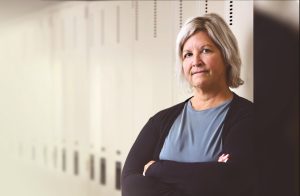Microplastics found in 80% of people
With huge amounts of plastic waste dumped in the environment, microplastics now contaminate the entire planet, from the summit of Mount Everest to the deepest oceans, Microplastics enter our bodies via food, water and breathing. Now, researchers who found tiny particles in most human blood and feces samples, are worried as they are predicting future damage to human cells and organs.
Source: theguardian.com
Two new signs of Parkinson’s
Hearing loss and epilepsy have been identified early signs of Parkinson’s according to new research. UK study lead Cristina Simonet, suggests that, “It’s important that practitioners are aware of these links and understand how early the symptoms of Parkinson’s can appear, so that patients can get a timely diagnosis.”
Source: JAMA Neurology
Can ketamine keep drinkers sober longer?
An unexpected new treatment for alcoholism: ketamine. A phase II trial, dubbed Ketamine for reduction of Alcohol Relapse (KARE), suggests success when ketamine is combined with therapy. Compared to a control group who did not receive ketamine, participants were 2.5 times more likely to abstain from drinking through the end of the trial. Apparently, Ketamine acts on the brain by essentially blocking a receptor that plays a key role in learning and memory. Changes to the receptor may influence behaviours related to addiction—including future behavioural patterns.
Source: American Journal of Psychiatry
Heart disease and gender differences
More lethal in women than men, heart valve calcification is a leading cause of death. A McGill research group led by Prof. Marta Cerruti discovered that calcified heart valves of women have a different mineral composition than those of men. Next steps include building a lab model to replicate the differences, help detection and explore non-invasive treatment tailored for women.
Source: The Canadian Light Source
Rural care to manage lymphedema
Breast cancer-related lymphedema (BCRL) is a lifelong condition. Millions who develop breast cancer are younger than retirement age and in rural and small-town survivors may face unique challenges in terms of finding BCRL/survivorship resources. In a small, but focused study, rural women received intensive treatments, established their own self-care routines, had support identifying strategies for completing work and home responsibilities and had more mental preparation than the control group. The result: as expected, more successful BCRL self-management.
Source: University of Missouri
Glaucoma: the ‘silent thief’
About 728,000 Canadians live with glaucoma with almost half admitting to no prior knowledge of it before diagnosis. Known as the ‘silent thief of sight,’ glaucoma is an eye disease where increased intraocular pressure can damage the optic nerve leading to vision loss. Early diagnosis and treatment are key. A survey of 150 Canadians living with glaucoma reported:
• 69% don’t know what type of glaucoma they have.
• 22% experienced some vision loss before diagnosis.
• The average age of glaucoma diagnosis is 51 with significantly more Quebecers diagnosed between ages 26-57.
• 59% of glaucoma patients have family members who’ve been examined too.
Source: worldglaucomaweek.org
An ocean in your brain
For years, the brain has been thought of as a biological computer that processes information through traditional circuits, whereby data zips straight from one cell to another. While that model is still accurate, a new study led by Salk scientists Thomas Albright and Sergei Gepshtein shows that there’s also a second, very different way that the brain parses information: through the interactions of waves of neural activity.
Source: salk.edu.
Photo: Chokniti Khongchum, Pexels














